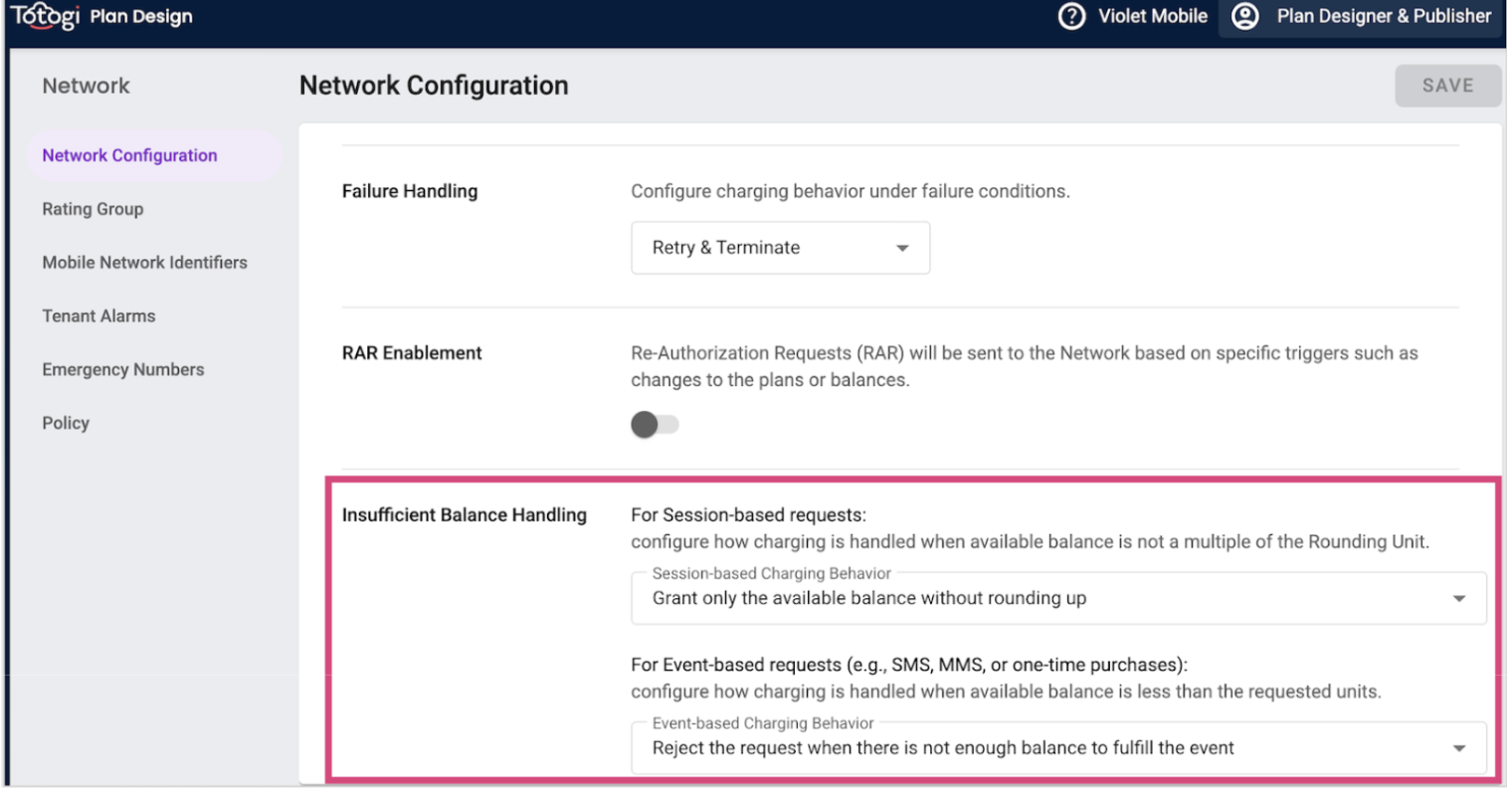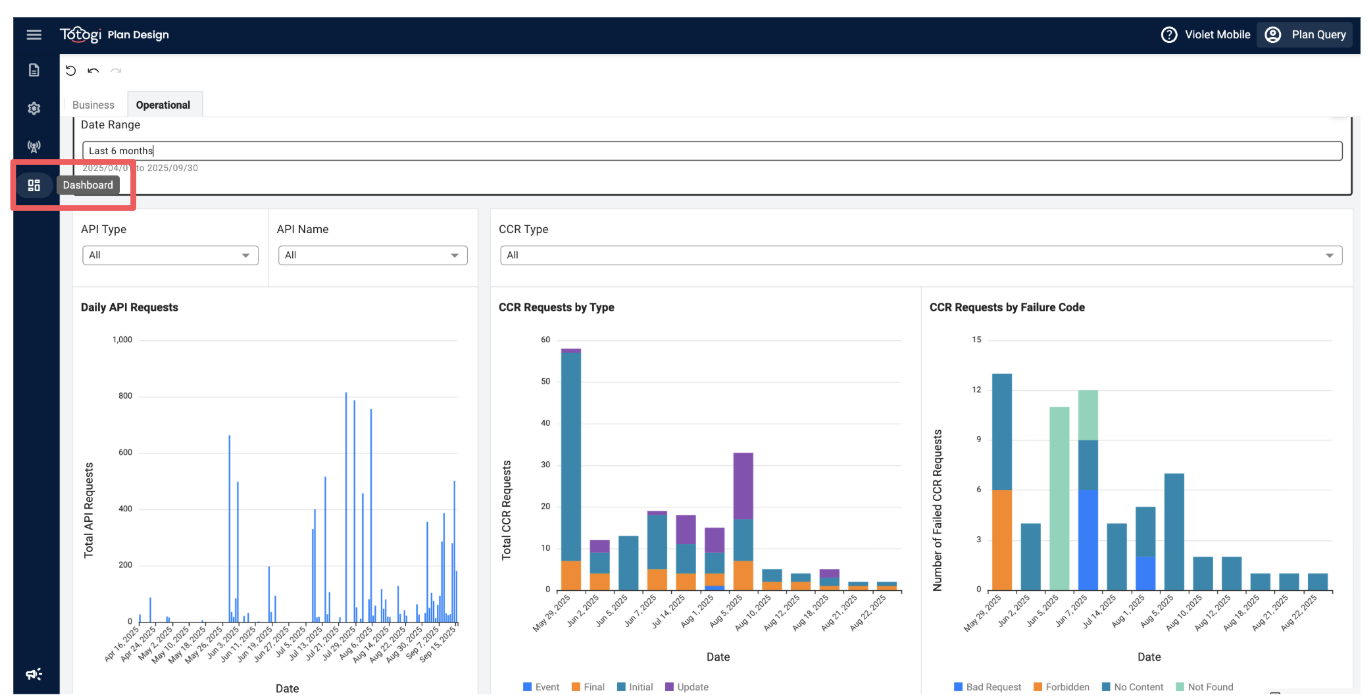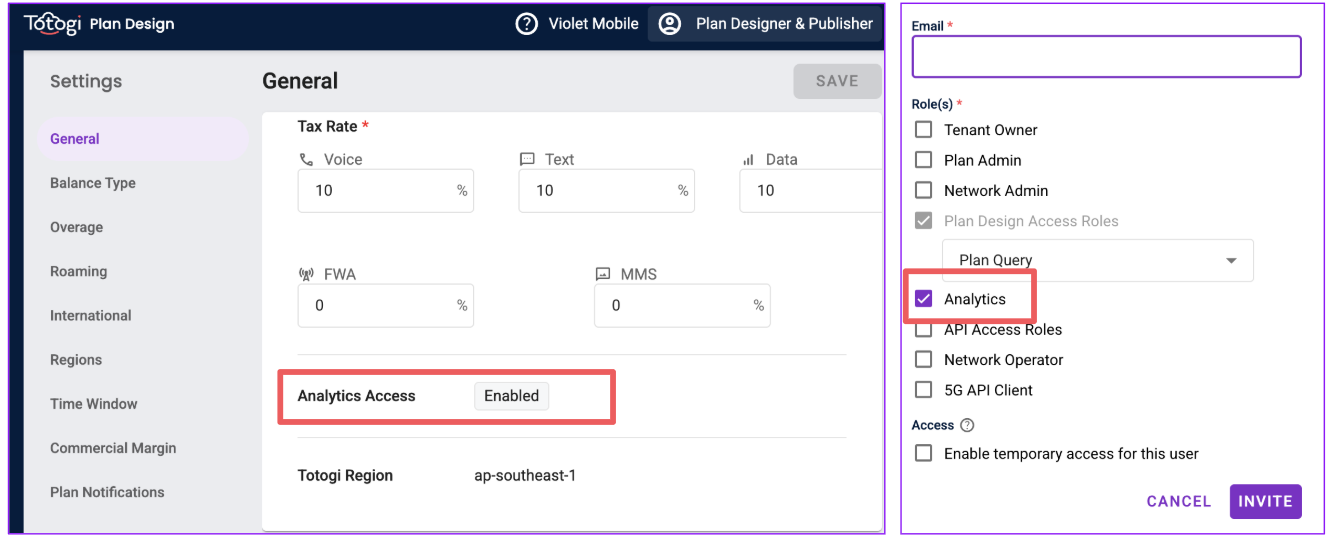Release Notes for Q4 2025 are now live. Check it for the most recent changes and updates. For a complete overview of all Totogi releases, visit the Release Notes Archive.
New Functionality
- Sep 30, 2025 Totogi now supports Flexible Credit Handling for Insufficient Balance Scenarios, designed to enhance charging accuracy and provide flexibility. This feature allows operators to configure how the system handles insufficient balances for both session-based and event-based requests.
Previously, Totogi only supported a default behavior where the available balance was granted, rounding up to the next full unit. This behavior applied to both session-based and event-based requests.
With this feature, operators can now configure the desired behavior individually for session- and event-based requests by choosing one of the following options.
1) Session-Based Charging Behavior
- Grant available balance, rounding up to the next full unit (default).
- Grant only the available balance without rounding up.
- Do not grant leftover balance smaller than the rounding unit.
2) Event-Based Charging Behavior
- Grant available balance, rounding up to the next full unit (default).
- Reject the request when there is not enough balance to fulfill the event.
Insufficient Balance Handling can be configured inside Totogi Plan Design under the Network Configuration section.
Refer to the Plan Design Help for examples on how each setting affects rating.
- Sep 16, 2025 Totogi introduces the integrated Plan Design Dashboard as part of its evolving Analytics capabilities, providing tenants with direct access to key Business and Operational insights. This first release gives users a consolidated view of both Business and Operational insights such as account growth, plan subscriptions, API usage, and charging requests.
Key Features
Business Dashboard
- Accounts Added (Month to Date) – Net number of accounts added during the current month, up to today
- Accounts Added (Last Month) – Net number of accounts added during the previous month.
-
Daily Net Change in Accounts – Day-to-day difference between accounts created and deleted.
- Daily Net Change in Plan Subscriptions – Net daily change in plan subscriptions (new minus cancelled).
Operational Dashboard
-
Daily API Requests – Total API calls per day, with filters for API type and API name.
-
CCR Requests by Type – Breakdown of charging requests by type (Initial, Update, Final, Event).
-
CCR Requests by Failure Code – Failed charging requests grouped by error code (e.g., Bad Request, No Content).
Access Control
- Dashboards are tenant-specific and available only if the Analytics feature is enabled for the tenant. To confirm if dashboards are enabled for your tenant, check General > Settings for the Analytics flag. If not enabled, contact Totogi Customer Support to have it enabled.
-
Users must have the Analytics role in Plan Design to view and interact with dashboards.
Future updates will expand these dashboards with additional metrics and AI-powered natural language tools for creating and interacting with charts.
- Aug 27, 2025 Totogi now supports Subscriber Lifecycle Management, a new feature that allows you to visually define and manage the lifecycle states of your subscribers. Withan intuitive graphical editor in Plan Design and API-based integration at the account level, you can now model, assign, and automate subscriber lifecycle transitions with full control and traceability.
Key Features
- Graphical Lifecycle Editor in Plan Design: Create and manage custom subscriber lifecycle states and transitions using a visual editor. Configure expiry durations and target states for each transition directly within Plan Design.
- Account Assignment via API: Assign lifecycles to subscriber accounts using API calls. Retrieve lifecycle and expiry information through the getAccount API.
- Automated Expiry-Based Transitions: Automatically transition accounts to the next configured state once a defined expiry period is reached.
- Manual State Changes via API: Move subscriber accounts between states on demand using API-based state transition calls.
- EDR Logging: All lifecycle-related changes — including creation, assignment, manual or automatic transitions — are logged in Event Detail Records (EDRs) for auditability and transparency.
How to Use Subscriber Lifecycle Management
- Use the following APIs to assign and manage lifecycles for accounts:
What’s Coming Next
- State-Based Service Restrictions: Define which services (voice, SMS, data, roaming, APIs, plans) are allowed or restricted based on the subscriber’s current state.
- Pre-Expiry Warning Notifications: Configure and send alerts to subscribers a set number of days before a state transition is scheduled to occur.
Fixes and Improvements
- Sep 03, 2025 We improved how the system manages balance cleanups when multiple plan services are involved in session reservations. The update improves reservation cleanup logic, prevents inflated counters and premature notifications, and simplifies session data structures for better maintainability and stability. Changes are applied seamlessly, with no expected impact to subscribers.



Ozlem Gok
Comments